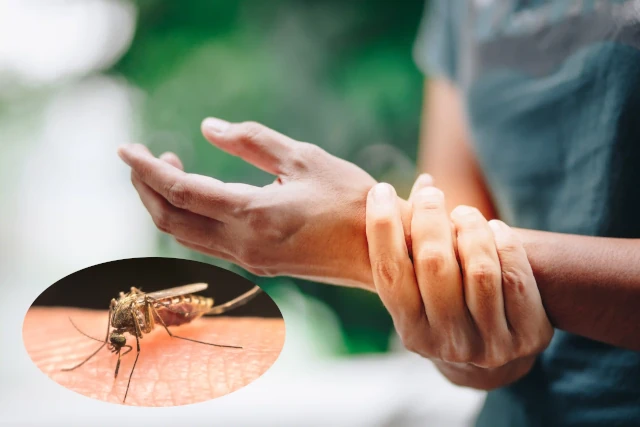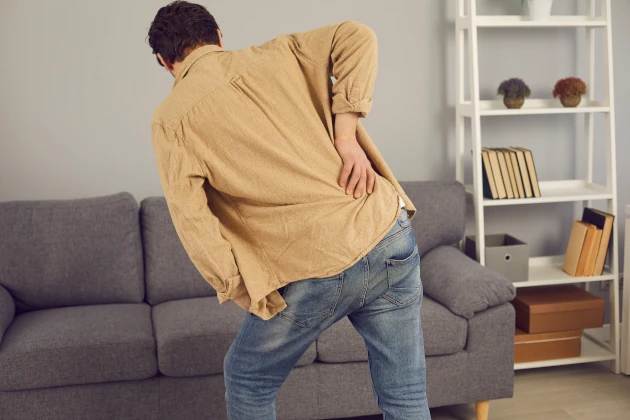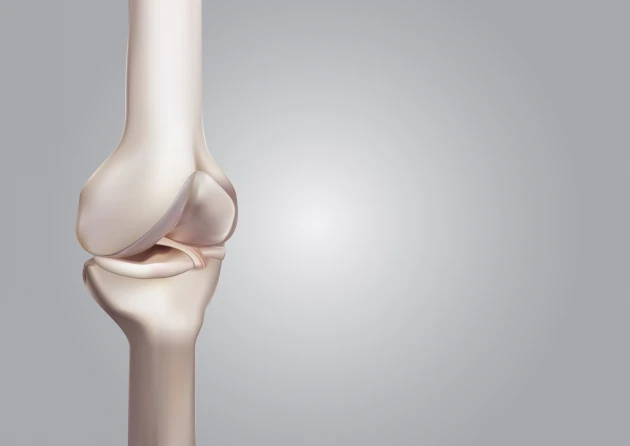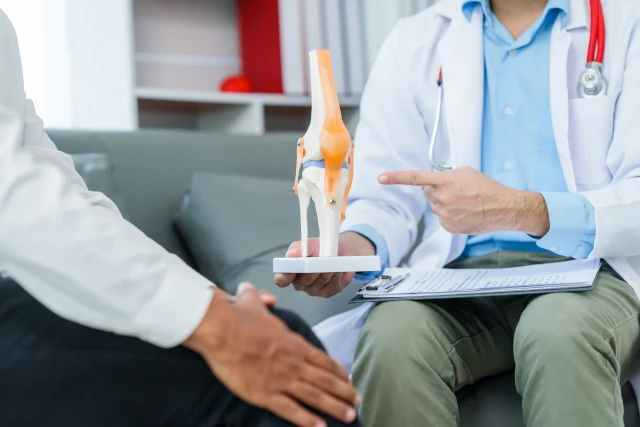
Joint Pain After Chikungunya: Causes, Symptoms, and Effective Relief Strategies
- Dr. Deepika Rai (MPT)
Connect with our expert physiotherapist for personalized physiotherapy advice.
Chikungunya is a mosquito-borne viral disease that often brings about a debilitating aftermath—joint pain. Even after the fever subsides, many individuals continue to experience lingering joint pain that can last for weeks, months, or even years. Understanding why joint pain persists after chikungunya and how to manage it effectively is key to regaining quality of life. In this blog, we will explore the causes, symptoms, and most effective strategies for relieving joint pain after chikungunya.
What Causes Joint Pain After Chikungunya?
Chikungunya is caused by the chikungunya virus (CHIKV), which is transmitted primarily through the bite of infected Aedes mosquitoes. While the acute phase of chikungunya usually includes high fever, rash, fatigue, and joint pain, the virus can cause chronic arthritis or lingering joint pain in some individuals, even after the initial symptoms have resolved. Here is why joint pain may persist:
- Immune Response to the Virus
The body’s immune system responds aggressively to the chikungunya virus, which can cause inflammation in the joints. Even after the virus is cleared from the bloodstream, the lingering immune response may continue to cause pain and swelling.
- Viral Persistence
In some cases, traces of the virus may remain in the joint tissues, causing continued inflammation and discomfort. This persistence can lead to symptoms similar to rheumatoid arthritis.
- Damage to Joint Tissues
During the acute phase, the virus may directly damage the joint tissues or synovial lining, which can result in long-term pain and stiffness.
- Autoimmune Reaction
Chikungunya can trigger autoimmune responses in which the body immune system mistakenly attacks its own joint tissues, leading to chronic pain and inflammation.
Common Symptoms of Post-Chikungunya Joint Pain
The symptoms of joint pain after chikungunya vary in intensity and duration. Here are some common signs to watch out for:
- Persistent Joint Pain:
Aching, throbbing, or sharp pain in the joints, often in the wrists, ankles, fingers, and knees.
- Swelling and Stiffness:
Swelling in the joints, accompanied by morning stiffness that may improve slightly throughout the day.
- Fatigue:
Constant pain may lead to fatigue, making it difficult to perform daily activities.
- Limited Range of Motion:
Reduced flexibility and movement in the affected joints.
Effective Strategies for Relieving Joint Pain After Chikungunya
Finding relief from joint pain after chikungunya involves a combination of self-care, medical treatment, and lifestyle adjustments. Here are some effective ways to manage the pain:
- Rest and Recovery
Rest is crucial for recovery. Allowing your body time to heal will help reduce inflammation and prevent aggravation of the joints. Avoid overexerting yourself and engage in gentle activities instead.
- Anti-Inflammatory Diet
Eating an anti-inflammatory diet can help reduce joint pain and promote healing. Include foods rich in omega-3 fatty acids, such as fish, chia seeds, and walnuts, as well as fruits and vegetables high in antioxidants like berries, leafy greens, and turmeric.
- Avoid:
Processed foods, sugary snacks, and foods high in refined carbohydrates, as these can worsen inflammation.
- Include:
Whole grains, lean proteins, and plenty of fresh fruits and vegetables
- Avoid:
- Gentle Exercise and Stretching
Light physical activity can improve joint function and reduce stiffness. Gentle exercises such as walking, swimming, and yoga can promote blood circulation and decrease pain.
- Low-Impact Exercises:
Swimming, cycling, or using an elliptical machine to avoid putting too much strain on the joints.
- Stretching:
Incorporate daily stretching routines targeting the affected joints to maintain flexibility and reduce stiffness.
- Low-Impact Exercises:
- Pain Relief Medications
Over-the-counter medications like nonsteroidal anti-inflammatory drugs (NSAIDs) can help reduce joint pain and swelling. If the pain is severe, a doctor may prescribe stronger pain relief options or corticosteroid injections to manage the symptoms.
- Physiotherapy
A physiotherapist can help develop a personalized exercise program to improve joint mobility and strengthen surrounding muscles. Techniques such as ultrasound therapy, manual therapy, and heat treatments may also be used to alleviate pain.
- Hydration and Warm Compresses
Staying hydrated helps maintain joint lubrication, while warm compresses can alleviate stiffness. Use a warm towel or heating pad on the affected areas for 15-20 minutes to ease discomfort.
- Supplements
Certain supplements may help alleviate joint pain after chikungunya:
- Omega-3 Fatty Acids:
Known for their anti-inflammatory properties, omega-3 supplements can help reduce joint inflammation.
- Glucosamine and Chondroitin:
These supplements are popular for maintaining joint health and reducing pain in people with arthritis-like symptoms.
- Vitamin D and Calcium:
Important for bone health, these supplements can help prevent further joint deterioration.
- Omega-3 Fatty Acids:
When to Seek Medical Attention
While post-chikungunya joint pain often resolves on its own, there are instances where professional medical intervention may be necessary:
- Severe or Worsening Pain:
If the pain becomes more intense or does not improve over time.
- Joint Deformities:
Any visible changes in the shape of the joint.
- Persistent Fever or Unusual Symptoms:
This may indicate an infection or other underlying condition.
Consulting a healthcare professional will help determine the best course of action and rule out other potential causes of joint pain.
Can Joint Pain After Chikungunya Be Prevented?
Although it is not always possible to prevent joint pain after chikungunya, there are measures you can take to reduce the risk:
- Early Treatment:
Seek medical attention as soon as chikungunya symptoms appear. Early intervention can help manage symptoms and potentially reduce the duration of joint pain.
- Mosquito Control:
Prevent chikungunya by using mosquito repellents, wearing protective clothing, and eliminating standing water to reduce mosquito breeding.
Conclusion
Joint pain after chikungunya can be a lingering and frustrating symptom that disrupts daily life. Understanding the causes, recognizing the symptoms, and taking proactive steps to manage the pain are essential for a successful recovery. Rest, gentle exercises, an anti-inflammatory diet, and physiotherapy can all play a role in relieving joint discomfort. While the road to recovery may take time, adopting a comprehensive approach to joint pain management can help restore mobility and improve quality of life. If you are struggling with post-chikungunya joint pain, seeking advice from a healthcare professional or physiotherapist can provide the support and treatment you need.
Connect with our expert physiotherapist for personalized physiotherapy advice.



